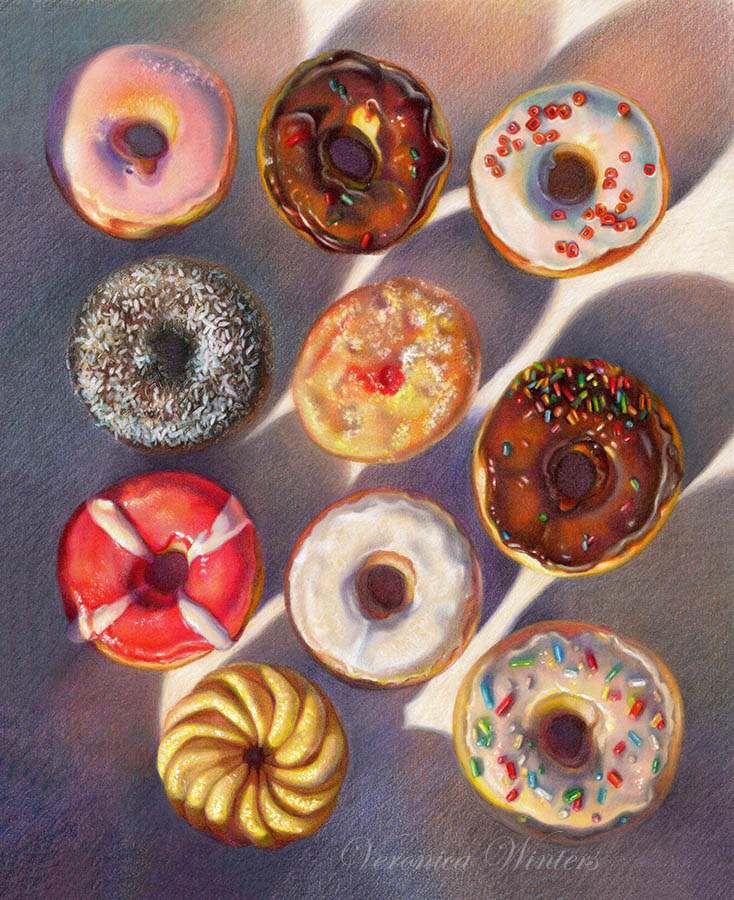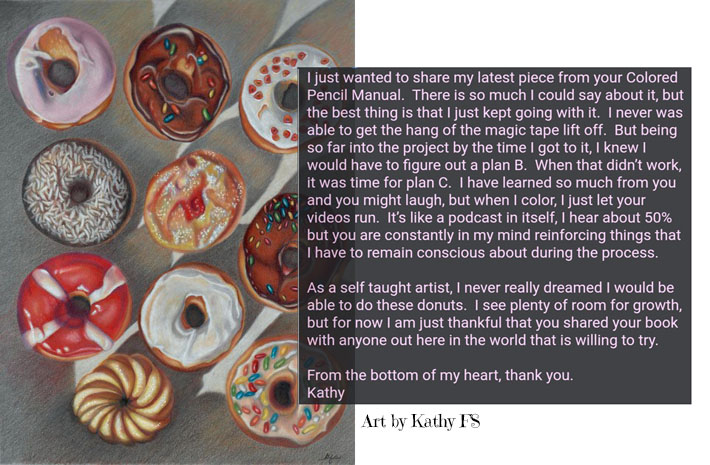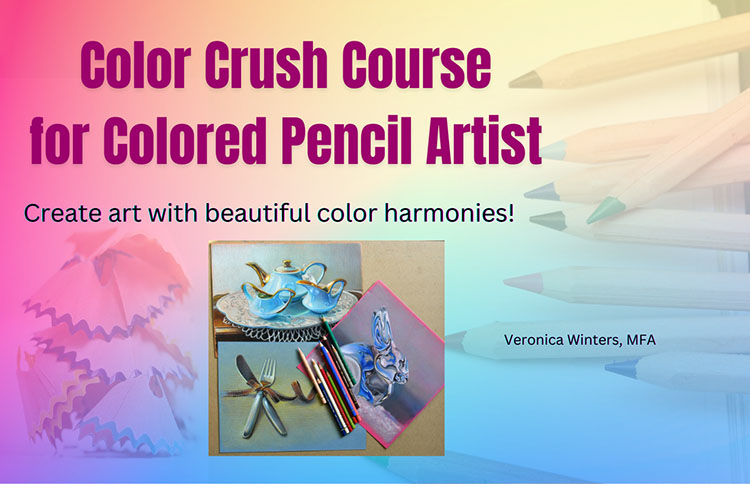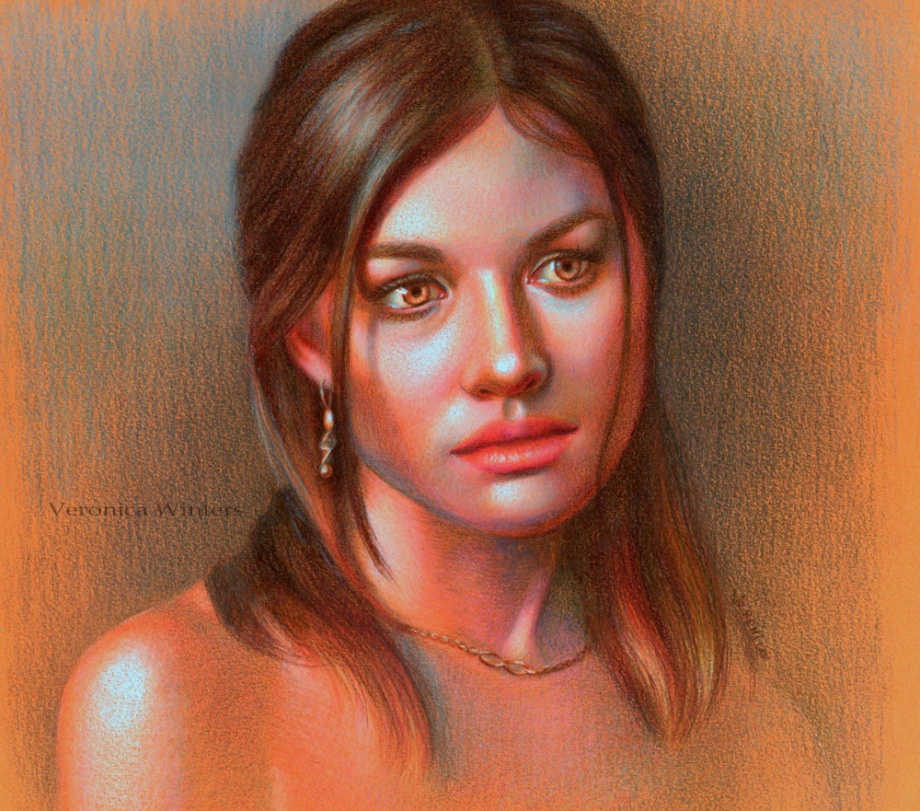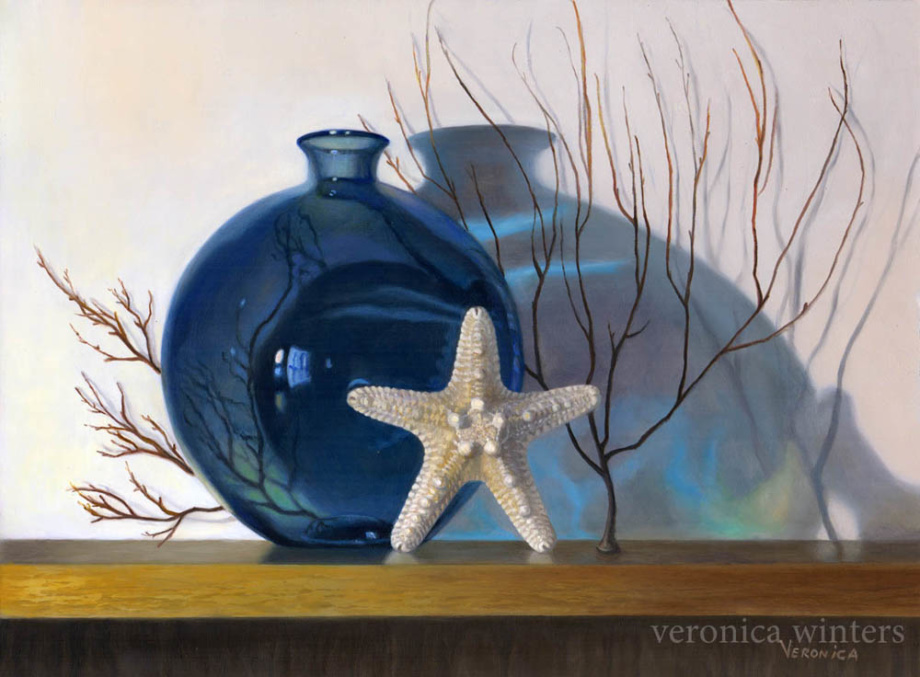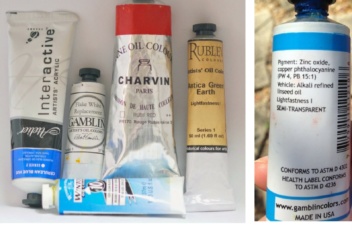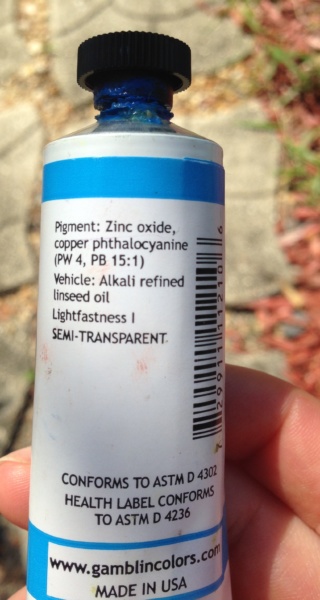Traditional oil painting techniques means painting natural forms from life. Academic studies are based on copying reality as close as possible to life through still life and figure painting. Classical painting method consists of daily drawing from life. That’s why when you visit the art studios at the Grand Central Academy of Art in New York, The Art Students League or the Ryder’s School in Santa Fe, you’ll see students copy objects and draw from figure all day long for weeks, months and even years.
I spent many years learning how to draw realistically and then how to paint with oils well. I must say that realist oil painting is a lot more challenging than drawing because color mixing is not the same as shading in colored pencil or painting in watercolor. In drawing artists shade via subsequent layering to build up a range of values. In painting we have to “guess” correct color, value and color temperature in one stroke! It requires good understanding of color mixing and lots of practice. In this article I’d like to explain several important factors that affect the quality of your oil paintings. Let’s dive right in.
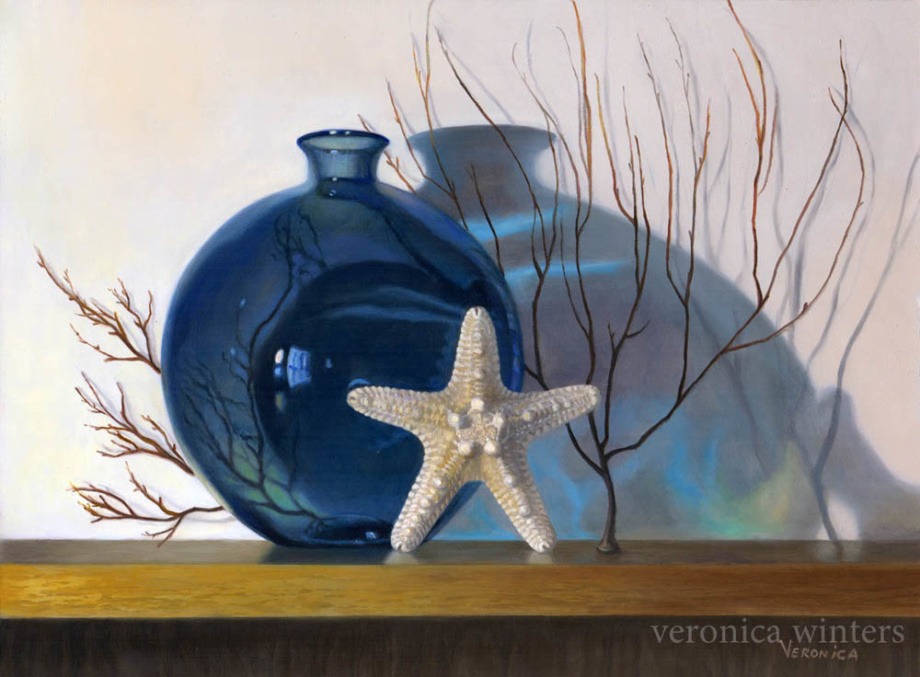
1. Invest in quality art supplies & understand their properties
Painting with oils could be a lot of fun when you understand how to use the art supplies in oil painting correctly. Of course, you shouldn’t break the bank by buying pricey art supplies. Painting with high-quality paints really makes a difference in the end result. I’m going to mention budget art supplies that are still good quality. I’ll also explain what to look for buying them in art stores.
Oil Paint
I use professional-grade oil paint. It has high pigmentation, so one small tube lasts for a very long time painting daily. Gamblin colors, Natural Pigments, Michael Harding and Utrecht oil paints are high-quality, yet affordable.
If you want your oil paintings to last, you must use White oil paint that has PW6 pigment and nothing else in it. Most white paint contains additives that break down the paint much faster that leads to deterioration of your entire painting! For instance, Winsor&Newton titanium white has PW6 and PW4 mixed with safflower oil in it. Gambin colors are mixed with high-quality linseed oil. It’s not that important when you paint as a hobby or for practice but it becomes important when you sell art to savvy art collectors. I have written an extensive post about oil paint here: https://veronicasart.com/oil-painting-techniques-whats-the-lightfastness-of-paint/
Panels & canvases
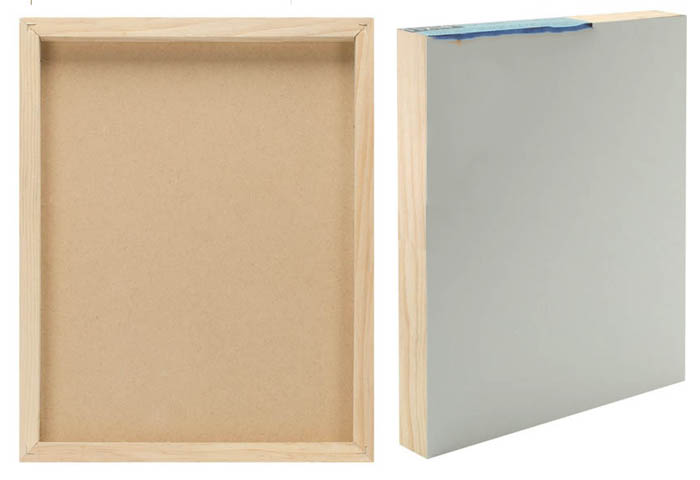
In general, panels for oil painting are much better than canvases because they don’t fluctuate much as room temperature and humidity change. Canvases tend to curve and deteriorate, especially in humid climate. Canvases expand and contract a lot due to temperature changes causing paint to crack in the long run. That’s why you can see the cracks in master paintings in art museums today. If you’re a beginner, it’s not your concern, but if you paint professionally, you should paint on panels.
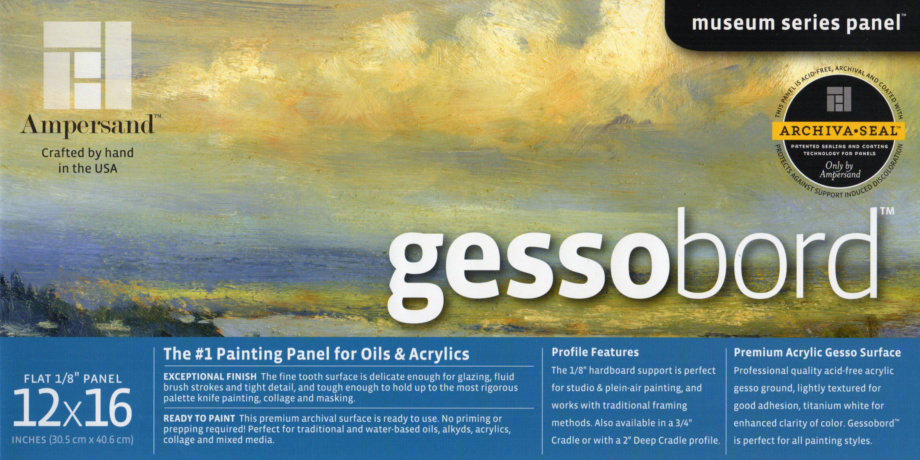
I recommend: Ampersand Gessobord (medium texture, professional white panels) & Jack Richeson toned gesso hardboard panels (toned surface is great to start painting in full color. It gives a warm undertone to colors!
Canvases have a very big advantage however. They’re light and easy to carry. Canvases can be stretched to any size. Large panels are very heavy and it’s difficult to find large panels selling online. When they arrive, the corners may be damaged.
Fredrix canvases have good quality-to-price ratio for beginner artists. Utrecht canvases (and other Utrecht art supplies) are high quality that don’t cost you a fortune. They are good for beginners in oil and acrylic painting.
Brushes & mediums
Brushes must have a spring to them, meaning that they should keep their point well while painting. It’s best to test the brushes at the art store as opposed to buying unknown brands online. A lot of them are too soft or don’t come to a nice point. Here I have an extensive post written about the brushes. I recommend oil painting brushes manufactured by the Rosemary brushes & Co.
Oil paint mixes with mediums for oil painting. All paints already have some oil mixed into the pigment in your tubes. You need a little bit of medium in the 2nd and subsequent layers of painting to develop transparency and vividness of color. I also use the medium to clean up the brushes during the painting process when I switch between the colors. Clarified, cold press linseed oil is the best for oil painting because it’s stable. One disadvantage, it yellows quite a bit over an extensive period of time. Walnut oil doesn’t yellow. It slows down the drying time of oil paint however. If you’re slow, this is a great medium to work with. I recommend Sennelier Clarified Linseed Oil. Buy a small bottle. It lasts for a very long time.
Varnishes & palettes
You’ve got to have medium-toned palette for oil painting. It doesn’t really matter if it’s wood or plastic. What matters is its size and hue. You need a large one to have enough space to mix colors. Medium-toned panels are great since most of the oil painting techniques involve painting on a medium-toned surface (The underpainting in browns or greens or grays preps the painting for color layers). I have a rectangular, 10×14 palette made in Italy –Feather’s touch palette. You’ll find a great selection on this site: https://www.jerrysartarama.com/
Varnishes come in sprays and liquid form. My absolute favorite is Grumbacher final varnish for oil and acrylic painting, matte. It gives me a very even coat in seconds. Many artists like Gamblin varnishes. Please know that both the surface and space must be super clean! Varnishes attract dust like a magnet and then it’s a pain to remove any tiny hairs from the surface. Usually, you varnish oil paintings in 6 months after painting or you could wait on varnishing your oil painting even longer. Spray two-three times outdoors in low humidity environment.
Also, have at least one palette knife to mix batches of paint.
Additional art supplies: https://veronicasart.com/5-great-art-supplies-to-use-in-your-drawing-and-painting/
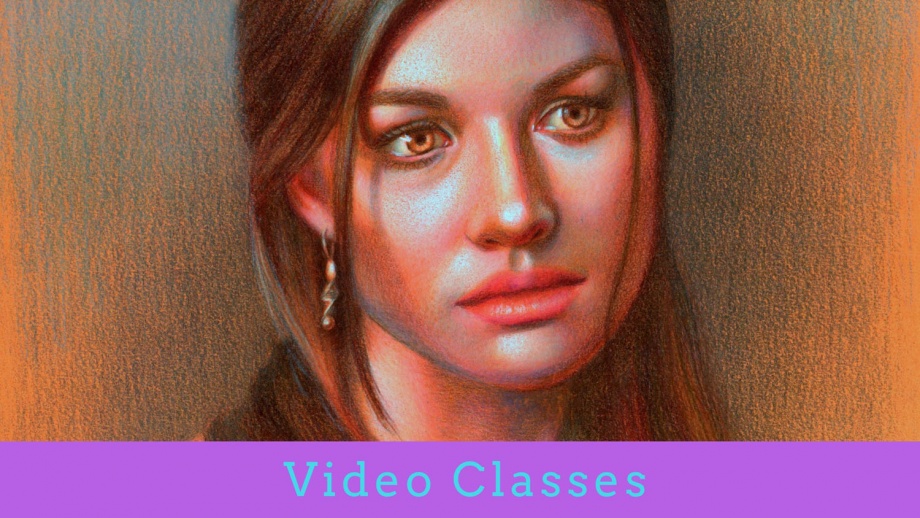
2. Paint everything from life!
Paint still life with oils from Life. Direct observation is key. There is no better way learning to see how light turns the form!
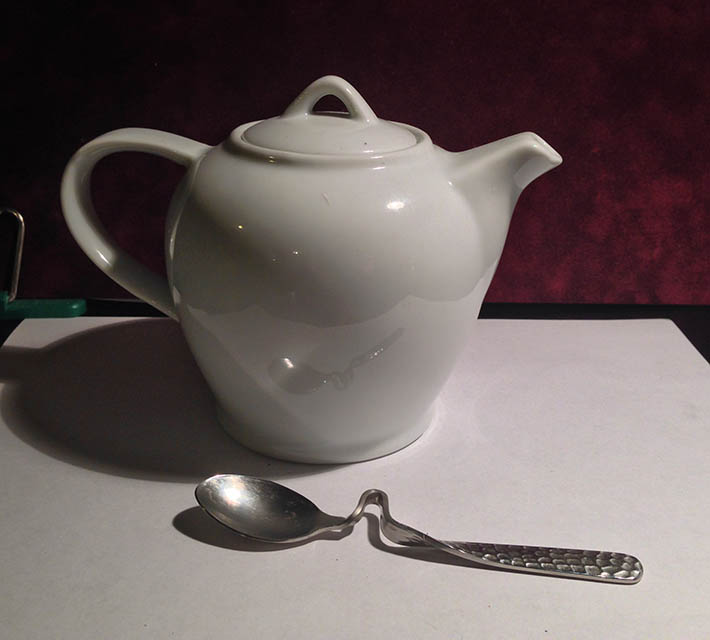
Links to how to set up a still life: https://veronicasart.com/how-to-paint-still-life-step-by-step-oil-painting-techniques/
3. Precise prep drawing is a must to create realistic oil paintings
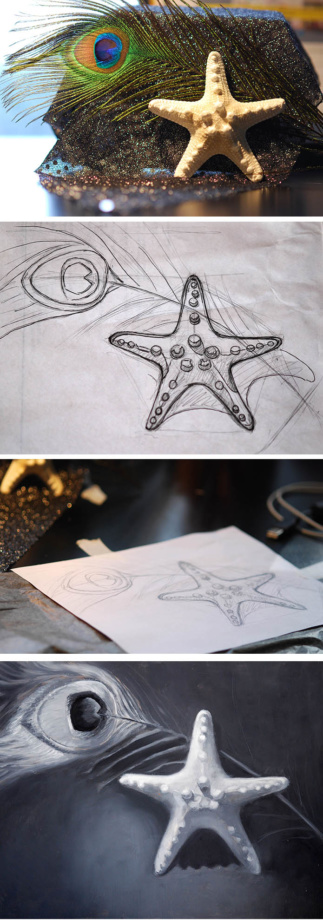
Drawing skills are super important! Prepare a full-scale preparatory drawing in accordance with classical oil painting techniques. You can read about it here: https://veronicasart.com/how-to-use-graphite-transfer-paper-to-trace-designs-for-drawing-and-painting/
4. Direct vs. Indirect painting
There are different approaches to color mixing in painting. The Impressionists painted without the use of black. Their paintings taught me to see colors in shadows. The old masters painted with black. I don’t know how Velasquez or Caravaggio would work without the use of black. Their high-contrast paintings taught me to focus on placement of shadows, not the details. Vermeer and Ingres have subtle, controlled palettes that reveal beauty through color unity.
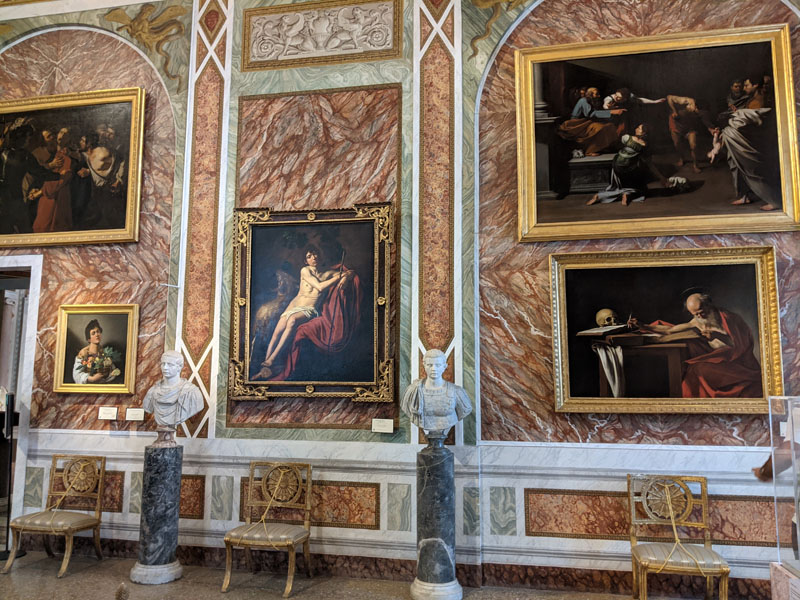
Direct oil painting technique
No matter what oil painting style you choose, never put acrylic paint over your oil paint! High-quality acrylic paint is ok underneath the oil paint. Always paint following the fat-over-lean rule with oil paint. Meaning that you start out with very thin paint using no medium and progress painting, building up thicker layers with more oil and linseed oil.
Direct oil painting technique is oil painting in full color right from the start. It doesn’t have the underpainting layer done in one hue. However, oil painting in full color often has 2-3 layers, depending on the artist’s style of painting.
Direct painting in full color became very popular among the Impressionists and landscape artists who began sketching outdoors in mid. 19th century. This change happened due to the simplification of the entire manufacturing process of oil paint. Artists could finally buy colors in tubes to carry them around to paint outdoors.
Indirect oil painting technique
Indirect oil painting technique is the most used traditional oil painting method. It’s about creating an underpainting in one color only and then layering the colors in subsequent layers. This method has several variations.
It could be done in black-and-white (grisaille) or in low chroma greens ( white skin has a lot of green in the shadows). The grisaille oil painting technique allows the artist to develop values in shades of grey. Values are more important than colors because values express the 3D effect, the illusion of something being round on a flat surface. The same is true for painting in low-chroma green-greys. You can find many classical art studies in art museums when artists painted in grisaille only or made an earlier version of a finished, full-color painting. Ingres comes to mind here.
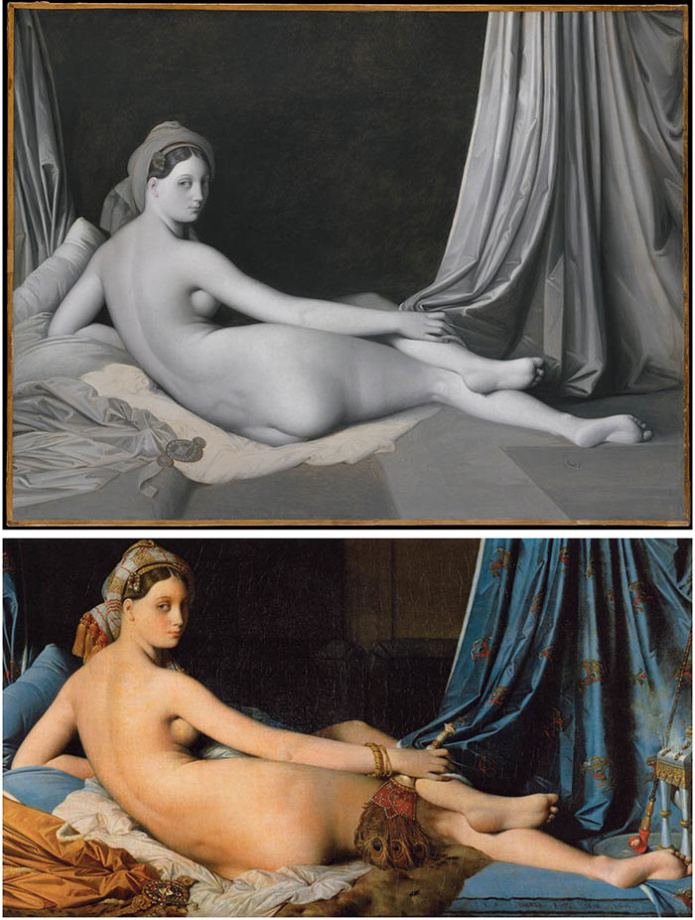
Grande Odalisque in Grisaille and full color by Ingres | http://www.metmuseum.org/art/collection/search/436708
Here are two versions of the Odalisque painting completed by the 19th century French artist – Ingres. Usually, the grey monochrome painting looks like a finished work of art in its own right. Technically, it’s painted on a tinted, warm brown surface. So this warmth shows through the shades of grey. Every layer must be thoroughly dry before continuing painting. If you paint over the wet layer, you not only mix the colors you don’t want to mix, but also make the paint fragile and easy to crack in the future!
Grisaille means ‘grey’ in French. It’s an oil painting technique that has been used by artists for centuries. Grisaille means painting in monochrome or shades of grey. Usually it refers to creating underpainting. Sometimes other low chroma colors are added. For example one of the Italian painting techniques is painting in shades of low-chroma green. So shades of grey look greenish (because skin tones in white people look greenish).

My grisaille palette is Gamblin titanium white+ ivory black + Burnt Sienna. Burnt sienna is a warm brown that 'warms up' the greys.
Why do you need to know about this oil painting technique? You learn to see values as opposed to color and to create volume on a flat surface in just two colors! It trains the eye to see and paint a wide range of tones. In classical oil painting training artists painted in greys and then added colors over the underpainting.
5. Combining the effects: sfumato, glazing & scumbling
Glazing means applying oil paint very thinly over the dry layer. Glazing gives you the effect of transparency. This technique requires the use of linseed oil or walnut oil to dilute the pigments. Strong paper towel is needed to wipe off some of the paint to create the thinnest layer possible.
Glazing is useful to unite all shadow areas and to glaze the colors in progression, creating special effects. You can do glazing multiple times when each layer dries completely. Also, know that each new layer darkens the surface. So plan ahead and paint your values a bit lighter, knowing that they’ll be darker via glazing in the end. I show the glazing technique in a short video course painting painting the blue vase.
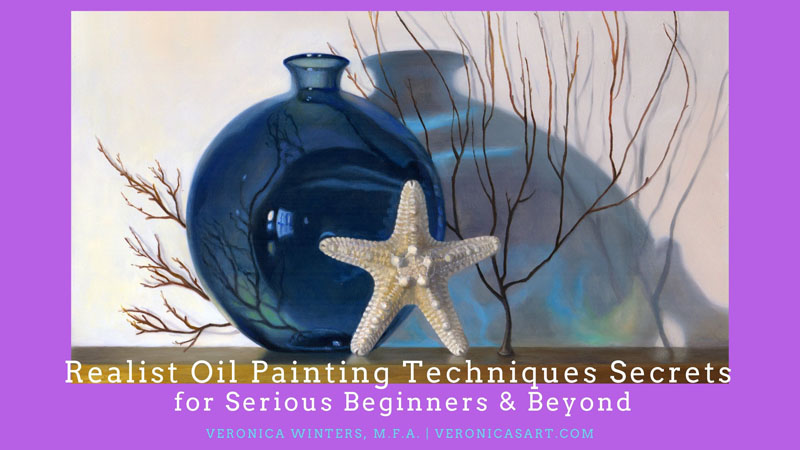
Scumbling means applying light, opaque paint over the previous layer. Scumbling is great to paint fog, mist or to lighten up any area, uniting the surface as well. It’s possible to create fuzziness on the fruit or softness on the cheeks you can observe in classical paintings.
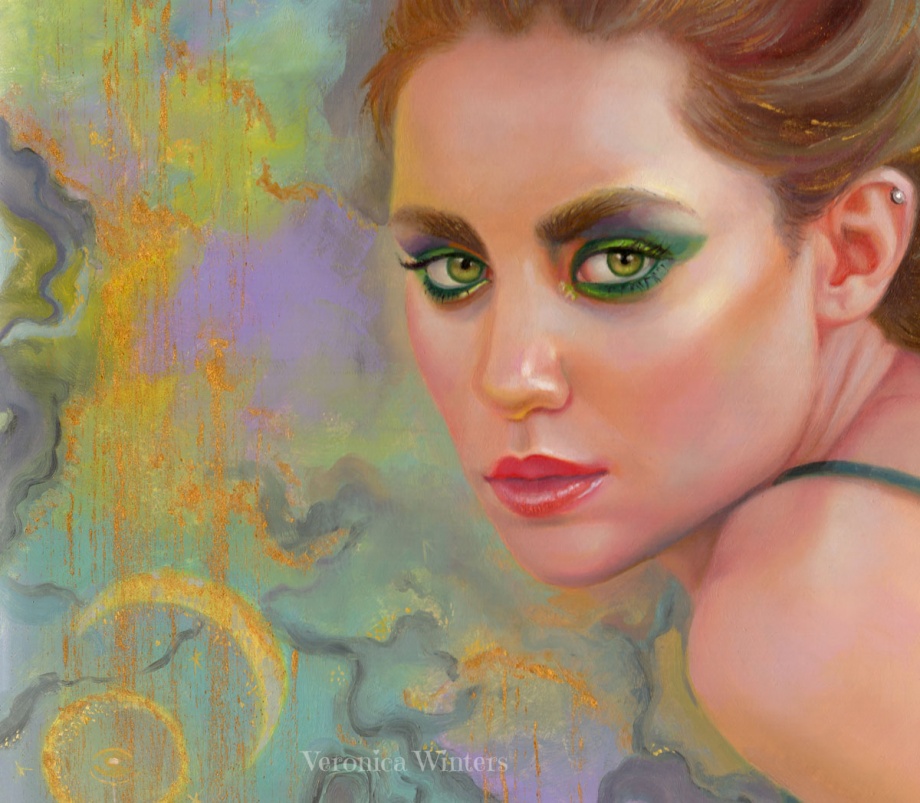
Sfumato is an Italian term that means super soft shading. Sfumato gives haze or smoky effect to oil paintings. Leonardo is widely credited for the invention and use of this painting technique. If you look at his late paintings, the transitions between the tones are super soft with no visible edges, especially in the skin tones. The background is hazy.
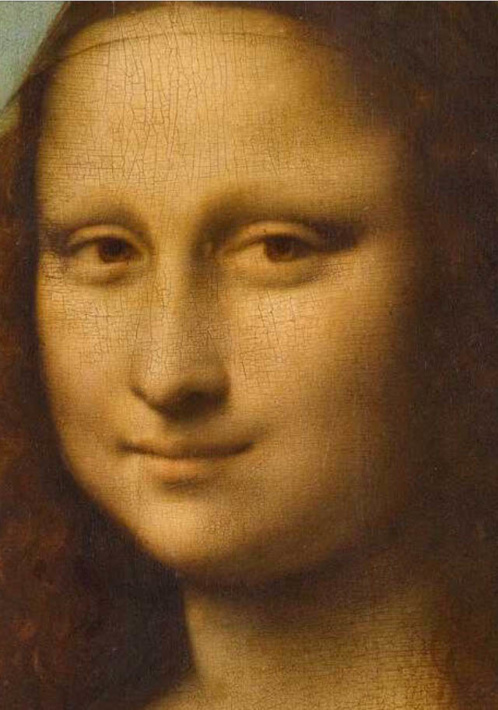
You can achieve such effect by carefully blending every new layer of paint with a separate (clean from paint), soft brush. Paint application is different too.
Why do you need this technique? Objects go out of focus and fade as they recede in space. So you’ve got to soften the edges a lot to show this aerial perspective. Skin tones are also very soft. Personally, I’m far away from this method of painting as I like to have strokes in my paintings but I often look at da Vinci’s work to push myself to create softer shading.
If you’re interested in da Vinci’s work, I like this wide format, hardcover book by Pietro C. Marani titled “Leonardo da Vinci, the complete paintings.”
One more thing. Paint the same object from different angles and under different lighting conditions. This will help you understand how light turns the form. As you can see painting with oils requires thorough understanding of materials, subject and styles to become good at it. Hope this article gives you plenty of information to start painting with oils like a pro! Thank you for reading and if you’d like to keep in touch you can subscribe to my VIP list or follow my art on Instagram, and YouTube. Good luck!
To read how to varnish your art, go here: https://veronicasart.com/fixatives-varnishes-what-you-need-to-know-to-preserve-your-art/
